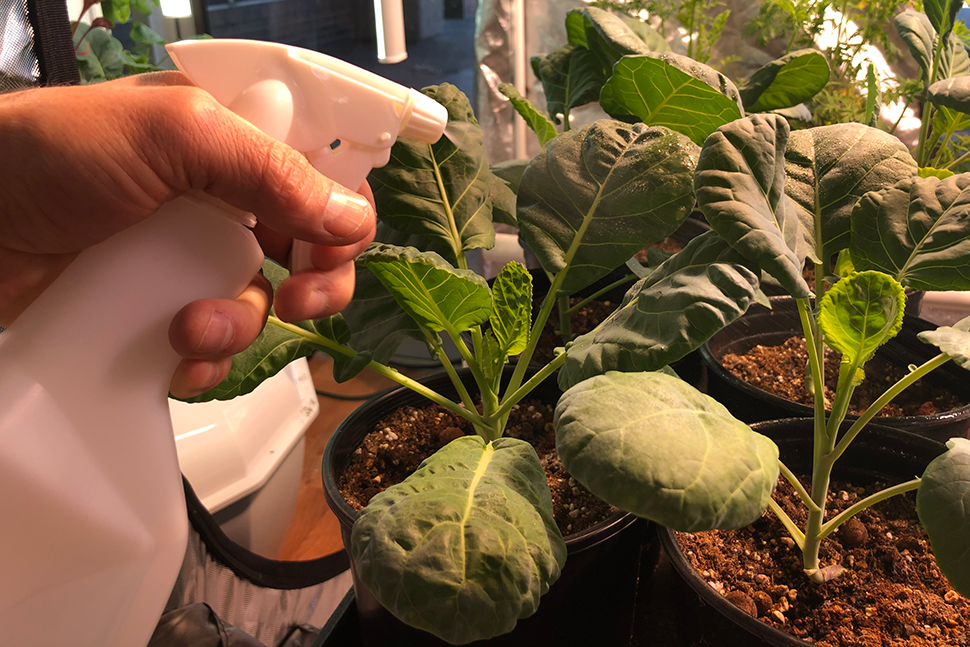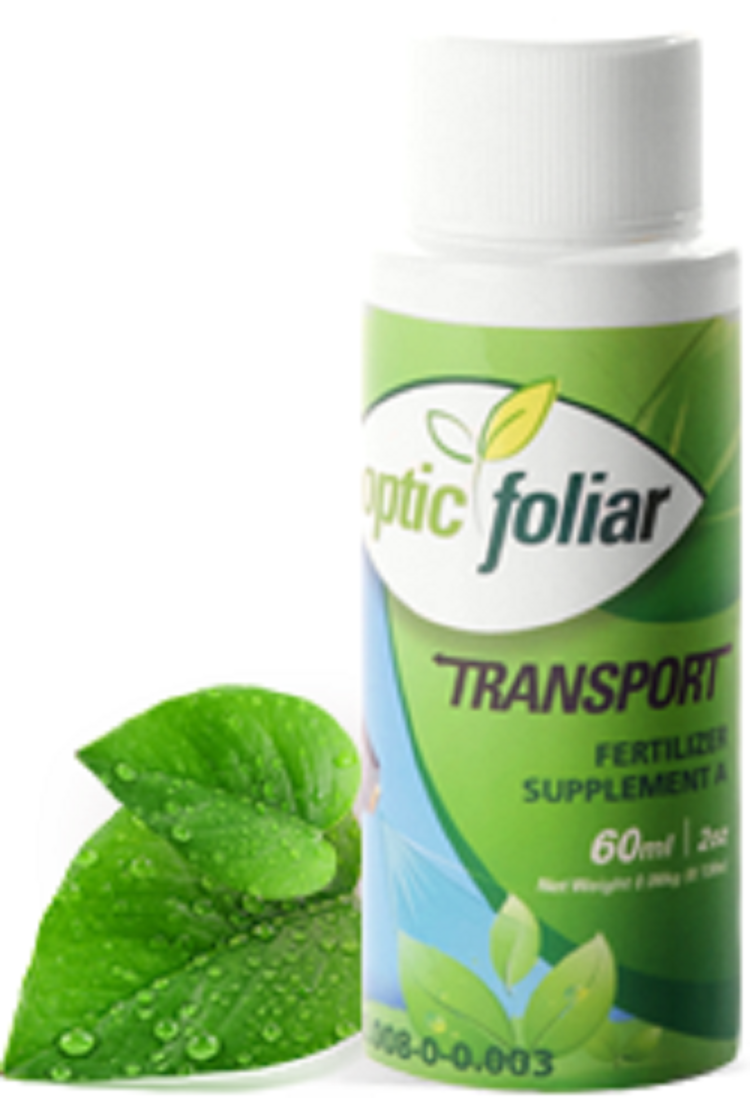Foliar Nutrition

Plants absorb the majority of their nutritional needs through their roots, but they can also utilize nutrients delivered directly through their leaves or foliage. While foliar feeding can be very effective as a supplement to address specific nutrient deficiencies in your plant, it’s by no means a substitute for root-based nutrient uptake.
Nutrient Absorption
When nutrients are applied to the leaves of a plant, they can be absorbed rapidly through stomata, tiny pores that allow the plant to exchange oxygen for carbon dioxide. This means that a very light nutrient mix can go a long way and have an almost immediate impact. Unfortunately, the positive impact of this rapid nutrient uptake is often limited to the particular area that received the foliar spray and does not travel well to other areas of the plant.
Additionally, macronutrients like nitrogen, phosphorous and potassium are needed in quantities larger than can be realistically applied to foliage. For most plants, you would essentially have to be spraying the leaves all day long to give them enough of these nutrients to keep the plant growing. That has the potential to create all sorts of fungal and bacterial issues from such a consistently damp environment, so we wouldn’t recommend attempting it.
For these reasons, foliar feeding is best employed to give an extra boost to plants during periods of rapid growth or to address specific nutritional needs that are not being met by uptake through plant roots.
Proper Application
 Equally covering all leaf surfaces (top and bottom) is important to maximizing the effectiveness of your foliar spray. The use of a surfactant or wetting agent like Optic Foliar’s Transport will help distribute your mixture evenly and prevent clumping of nutrients in any one location.
Equally covering all leaf surfaces (top and bottom) is important to maximizing the effectiveness of your foliar spray. The use of a surfactant or wetting agent like Optic Foliar’s Transport will help distribute your mixture evenly and prevent clumping of nutrients in any one location.
Foliar sprays that contain salt-based fertilizers also present the risk of “leaf burn.” As the water from your nutrient solution evaporates, fertilizer salts can be left behind on the surface of leaves in toxic concentrations. This makes the timing of your application important. Ideally, foliar feeding should take place early in the morning, in the late afternoon/early evening, on overcast/cool days or just before your indoor plants are about to go into the dark portion of their light cycle.
That will give the stomata time to absorb the nutrients before the water in your mixture has a chance to evaporate.
Our Recommendation
 Foliar nutrition is best used as a supplement to healthy nutrient uptake through your plants’ roots. It should be used to either address specific deficiencies or to give your plant an extra boost. It shouldn’t be relied on as the primary source of plant nutrition. If you’re addressing a specific deficiency, identify the particular nutrient that is needed, mix up a light formulation with water and a surfactant, then spray all leaf surfaces evenly just before the lights go out for the night. If you’re wanting a little extra boost for an already healthy plant, we like Optic Foliar’s Overgrow as an all-purpose foliar nutrient.
Foliar nutrition is best used as a supplement to healthy nutrient uptake through your plants’ roots. It should be used to either address specific deficiencies or to give your plant an extra boost. It shouldn’t be relied on as the primary source of plant nutrition. If you’re addressing a specific deficiency, identify the particular nutrient that is needed, mix up a light formulation with water and a surfactant, then spray all leaf surfaces evenly just before the lights go out for the night. If you’re wanting a little extra boost for an already healthy plant, we like Optic Foliar’s Overgrow as an all-purpose foliar nutrient.




